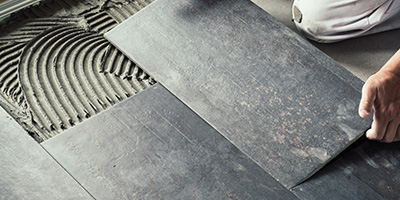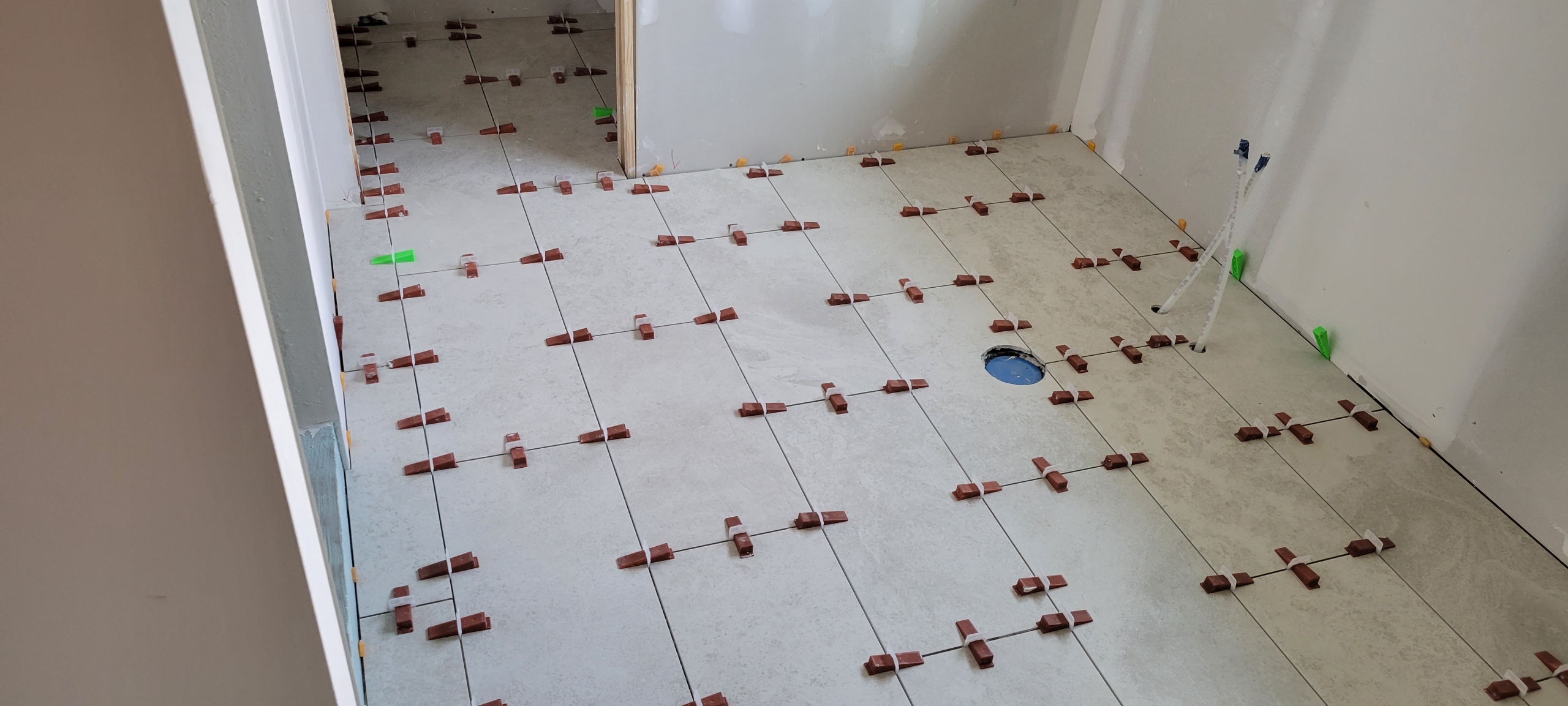Discover the Tricks to Perfect Ceramic Tile Installment Whenever
Achieving flawless ceramic tile installation may look like a complicated job, usually bring about stress and blemishes that detract from the total visual. However, grasping the art of ceramic tile setup entails a collection of accurate actions and techniques that, when performed properly, can result in a sleek and seamless coating. From surface area preparation to cement application, each stage plays a vital role in the last result of your job. By understanding the secrets behind each action, you can guarantee that your ceramic tile setup not just meets but surpasses your assumptions.
Proper Surface Area Preparation
Effective ceramic tile installment hinges substantially on careful surface prep work to ensure a flawless result. The surface area should be clean, dry, and structurally sound to avoid future problems such as loose floor tiles or cracked grout.
To ensure correct bond, it is suggested to rough up smooth surfaces via sanding or scarifying. In addition, using a guide can improve bonding in between the floor tile and the substratum adhesive. Uneven surface areas need to be leveled utilizing a self-leveling substance to avoid lippage and ensure a smooth coating.
Furthermore, looking for possible sources of moisture is crucial, as excess dampness can result in mold and mildew development and damage the ceramic tiles over time. Using a wetness barrier or waterproofing membrane layer in damp areas like kitchens or shower rooms is necessary to secure the tiles from water damages. By carefully preparing the surface area prior to ceramic tile installment, one can develop a durable and aesthetically enticing tiled area that will stand the examination of time.

Choosing the Right Adhesive
Picking the proper adhesive is an essential action in guaranteeing the effective installment of floor tiles. The kind of sticky you pick will certainly rely on numerous elements such as the kind of floor tile, the substratum product, and the place of the installment. There are various kinds of adhesives offered out there, including thin-set mortar, mastic, and epoxy.

Epoxy adhesives are waterproof and very resilient, making them optimal for areas vulnerable to moisture such as restrooms or cooking areas. They are additionally appropriate for mounting glass or steel view publisher site tiles. When picking a sticky, see to it to comply with the producer's referrals and take into consideration the certain needs of your tile setup job.
Precision Cutting Strategies
One of the most typical devices used for accuracy cutting in floor tile installment is the floor tile cutter. Tile cutters come in numerous kinds, including hand-operated tile cutters, electrical wet saws, and handheld floor tile cutters. Hand-operated tile cutters are ideal for straight cuts on ceramic and porcelain tiles, supplying tidy and exact sides.
Additionally, making use of tools like floor tile scribes or glass cutters can assist in scoring and snapping ceramic tiles with precision. By understanding these accuracy reducing methods, tile installers can ensure a professional finish and an aesthetically enticing outcome in their floor tile jobs.

Grout Application Tips
When transitioning from precision cutting strategies to grout application in tile installment, focus to detail and technique is paramount for accomplishing a flawless finish. Cement offers not only as my latest blog post a useful element that fills the voids in between tiles however additionally plays a significant function in the overall aesthetic of the installment.
When applying grout, work in tiny areas each time to avoid it from drying out too promptly. Utilize a rubber float to press the grout into the joints at a 45-degree angle, making certain complete insurance coverage and condensing the product. As soon as the grout is applied, use a moist sponge to clean the floor tiles, making certain not to remove grout from the joints. Ultimately, buff the floor tiles with a completely dry towel to remove any type of haze and attain a refined coating. Adhering to these grout application tips will result in a professionally installed floor tile surface area that enhances the beauty of any type of area.
Finishing Touches and Upkeep
To complete the ceramic tile installation project properly, attention to information throughout the completing touches and routine upkeep is important. After the cement has actually dried and the tiles are securely in place, the last steps entail ensuring that all edges are properly sealed.
Regular maintenance is key to protecting the charm and performance of your tiled surface areas. An easy routine of sweeping or vacuuming followed by mopping with a gentle check it out cleanser can aid maintain your floor tiles looking beautiful (tile installation austin). For areas that are frequently subjected to wetness, such as restrooms or kitchen areas, regular resealing of grout lines is advised to stop mold and mildew and mildew development
Conclusion
In verdict, achieving best floor tile installation every time needs interest to information and proper techniques. By concentrating on surface area prep work, picking the appropriate adhesive, using precision reducing approaches, using cement meticulously, and completed with focus to information, you can ensure a professional-looking result. Bear in mind to comply with these steps and maintain your ceramic tiles frequently to extend their lifespan and maintain them looking their finest.
One of the most typical devices made use of for accuracy cutting in ceramic tile installation is the tile cutter. Tile cutters come in various types, consisting of manual tile cutters, electrical damp saws, and portable floor tile cutters. Hand-operated tile cutters are suitable for straight cuts on ceramic and porcelain ceramic tiles, supplying accurate and clean edges. Furthermore, using tools like ceramic tile scribes or glass cutters can aid in racking up and snapping tiles with precision. By understanding these accuracy cutting methods, ceramic tile installers can make sure an expert finish and an aesthetically enticing outcome in their ceramic tile jobs.